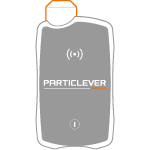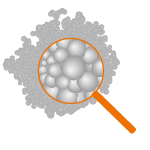Separating out background noise
They are present in concentrations of several thousand per cubic centimeter, or even more than 10,000 particles/cm3 in workshops. Concentrations recorded close to highways or airport runways may be as high as 1 million or even 10 million particles/cm3.
Such concentrations primarily come from the thermal combustion of engines, but there are also many other sources (home heating, particularly with wood; factories; etc.) that add particles to urban atmospheres. Nanoparticles may also be of natural origin, such as dust from earth materials and volcanic phenomena, but these represent a minority. All of these particles, whether natural or artificial in origin, may be carried by the wind and travel great distances.
When measuring exposure to a given type of nanoparticle, all other particles present at the workplace constitute particle background noise that may conceal the particles to be measured. In such cases, it is necessary to deploy a selective analysis strategy in order to only count the particles of interest.
In workplaces, all sources of heat (furnaces, engines, welding, heating, etc.) and moving parts (engines, turbines, mixers, forklifts, etc.) emit numerous nanoparticles into the air, which contribute to particle background noise. With respect to the risks, it is fundamental to be able to tell apart the origin of the particles and to measure the chemical substances emitted by the processes and operations selectively with respect to particle background noise.
ANSES (France's national agency for health security in food, the environment, and the workplace), in its April 15, 2014 report, noted this difficulty (APPENDIX 9 Exposure assessment, page 160).
Thanks to its technology, the measurement of manufactured nanoparticles by PARTICLEVER is carried out selectively with respect to particle background noise.



